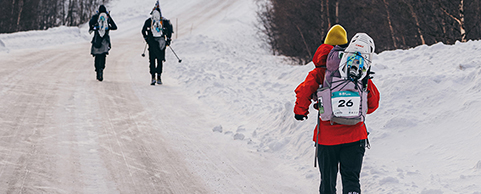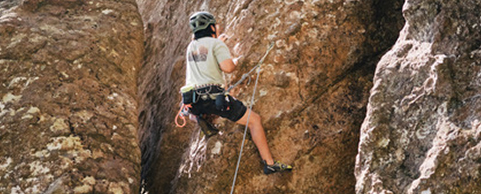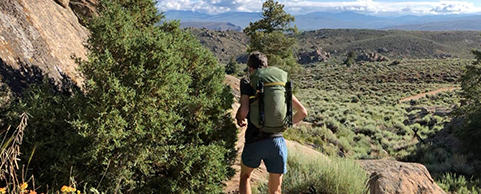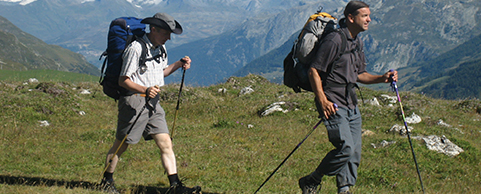Ian Maley talks about WILDERNESS EQUIPMENT – 40 years on the go!
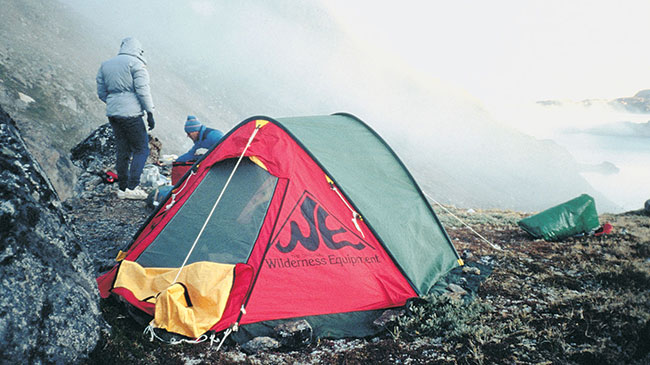
This month August 2017, Wilderness Equipment is 40 years old! How did that happen?
Five decades ago things were very different. If you owned a car you probably knew where to find the points and the carburetor’s main jet. Both gone. If you happened to live in Perth and were keen on bushwalking or rock climbing you probably bought your equipment when you were actually in Melbourne, Sydney or New Zealand, or by mail order. No longer.
The early '70s in Australia was still a time of cotton japara tents and oilskin rainwear, canvas packs with steel external frames and Norwegian-welted leather boots. The closest thing to outdoor fashion was Kiwi fair isle woollen knitwear. But change was in the wind, in the form of new internal frame packs, double-skin nylon tents with built-in floors and a new wonder material, Gore-Tex®. In the USA particularly, outdoor enthusiasts were driven to experimenting with lightweight synthetic materials and new design ideas. It was the genesis of some of today’s well-known world brands. We were there at the time! Many haven’t lasted the distance.
From an early age and throughout my school years I was always busy with my hands making stuff. When I started in engineering at the University of Western Australia I joined the outdoors club, stepped away from conventional sports and got into bushwalking, canoeing, caving, climbing and cycle-touring. The manager of the Scout Shop, the only place you could buy anything vaguely ‘rope and rucksack’ in Perth, had got hold of a Swedish outdoor gear catalogue from somewhere. I couldn’t afford a tent I particularly liked in that catalogue, so I made it.
In the winter of 1975 I used that ‘TR’ tent canoeing all the karri forest rivers in south-west WA. A year later I began twelve months of ‘backpacking travel’ across Australia with my partner. People whom we met were impressed with our tent and asked if I could make them one. I also saw obvious ways to improve a lot of the other gear we used on that trip, cycling in Tassie, for our Western Arthurs’ traverse and the South Coast Track.
We got home and back to studies but then, in a classic start to any long journey, we took a small step into the unknown and bought two industrial sewing machines. (I still use the unison-feed Pfaff 545 at home today). We started importing small quantities of specialist fabrics from USA suppliers and began making tents, daypacks, sleeping bags and panniers in our spare time. It all became much more serious as friends, and their friends lined up as customers.
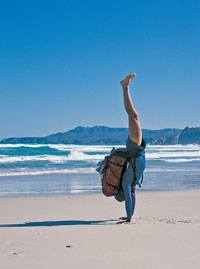
In August 1977 I registered the brand name Wilderness Equipment, an unusual choice back then. Unless you were interested in land conservation (we were, and remain so), ‘wilderness’ to most probably meant a place you wouldn’t want to spend 40 days and 40 nights (let alone 40 years). Add the word ‘equipment’ and people tended towards a more down-to-earth interpretation: bulldozers, heavy diggers and scrub rollers.
In 1979 we renovated an historic warehouse in the west end of Fremantle and moved Wilderness Equipment in. Now it is a university lecture theatre but we also did our fair share of learning in that space: materials properties, pattern making and production techniques. I eventually had to choose between an unknown career in engineering and what I have now come to regard as something of a privileged life – where the line between work and play is blurred, where work is endlessly creative, and where you actually make things that others with similar interests use for their enjoyment and grow attached to in the process. It’s hard to beat that as an underlying sense-of-purpose in something you might choose to do, and want to keep doing.
Late in 1979 the first WE Gore-Tex® jackets appeared. We used them two months later on our C2 canoeing expedition with friends on the Franklin River, SW Tasmania.
In 1980 the prototype First Arrow tent went with us to the Himalaya for a six-week workout in the Annapurnas. I pause here because, incredibly, this tent, little changed, remains the gold standard in winter expedition shelter.
In 1981 my first big capacity WE internal framed backpack design, the ‘Wilderness Expedition’, came back with me from testing in the remote Kimberley region and began the enduring Wilderness Equipment standard in big load-carrying comfort and durability. Canvas, of course. Right up to the present day, and many times each year, we have personally depended on our products on long, remote expeditions and shorter weekend ones alike. We understand the importance of product performance just as well as we know bad weather.
In 1983 we purchased a factory in North Fremantle and I added a second storey five years later. Our reputation for original design and durable, functional products grew as the years added up. Besides WE packs, tents, clothing and cycle bags we did a lot of made-to-order work for industrial customers: tents and clothing for Australian Antarctic Expeditions, protective clothing for firemen and industrial process workers and drysuits for the SAS are examples. Along the way we developed our own internal quality management system.
The list of expeditions that we have helped out is likewise extensive. From the early ’80s with Project Blizzard and Paul Caffyn’s sea kayak circumnavigation of Australia, to many Himalayan expeditions and, more recently, with Sandy Robson’s incredible re-enactment of Oskar Speck’s 1930s sea kayak journey from Germany to Australia, Wilderness Equipment has been there. Besides regular products we have supplied specialised equipment and clothing, from arctic kayaking suits and sledge-hauling harnesses, to custom packs and bags.
We have never lost sight of the fine balance between function, durability and weight. This has guided the many, unique design solutions first seen in Wilderness Equipment products, a process that has only accelerated in recent years. Since the beginning of 2000 I have been working in a vibrant global manufacturing environment where good ideas can become an economic reality by working in partnership with enthusiastic suppliers.
At the end of 1999 it had become impossible in Australia to manufacture a brand that retailers wanted to sell and where everyone could make a living. The textile, clothing and footwear industry in Australia was in terminal decline. I made a decision, the right one in retrospect, to keep WE going and move the production overseas. It happened to be to Viet Nam. Shutting the doors in North Freo was not an easy choice. Everyone there had been with me for over ten years. At this time I also formed a partnership with Sea to Summit in which they would handle day-to-day sales and distribution. That has worked well and, I must say, it is great to be part of that big family.
What has also been very satisfying has been working with our manufacturing partners in Viet Nam, many now counted as friends. Our preference is to work cooperatively and develop long-term relationships. Some of you know that already. We operate our independent (but Vietnamese family-owned) sample room there. It gives us unique capacity, efficiency and flexibility in product development and small batch production for field testing and specialist requirements. In fact, if you looked at what I did at the North Fremantle factory and what I do day-to-day in the VN sample room you would notice little difference, other than the change of location, the improved cuisine and, of course, the change that powerful mobile computing has made to everyone’s lives, whether they like it or not.
Where are we going? One of my four children, Henry Kelsey – he made his first bag aged seven – is now the Wilderness Equipment brand manager. Henry is based at Sea to Summit. (The other three are not far in the background offering engineering technical and medical support! None have had any say in their outdoor upbringing). So now, for the first time in my working life, I am not the boss. Henry and I are slowly expanding the range (bicycle bags will be back soon), growing our market coverage and looking very much to the future. We hope you will join us. If you do, as we have done for all Wilderness Equipment gear owners over the past 40 years, we will be there by your side.
Ian Maley – Wilderness Equipment founder
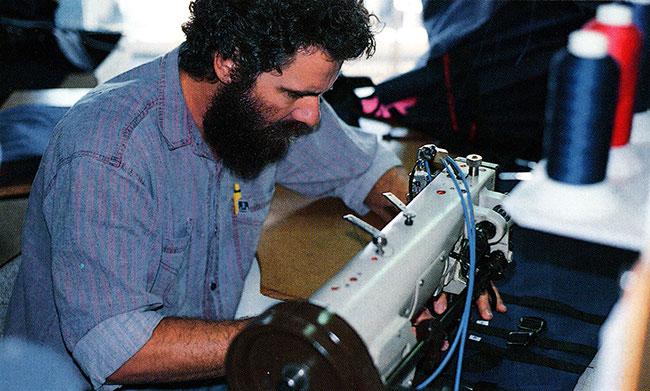
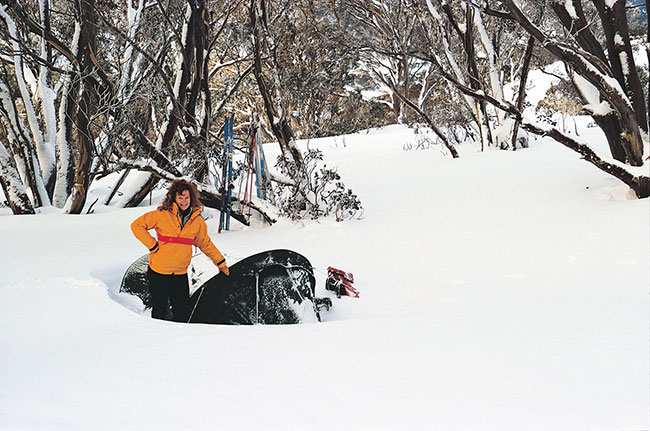
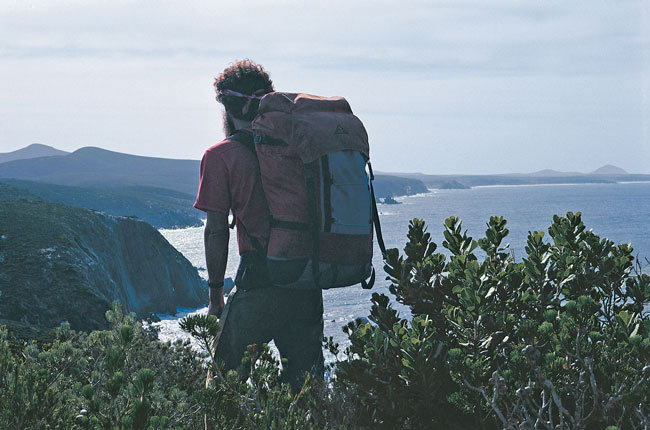
More Articles
- HIKING GEAR – NEIL BLUNDY'S 5 FAVOURITES
- HOW TO CHOOSE A TWO-PERSON HIKING TENT
- HIKING THE WESTERN ARTHURS IN WINTER













